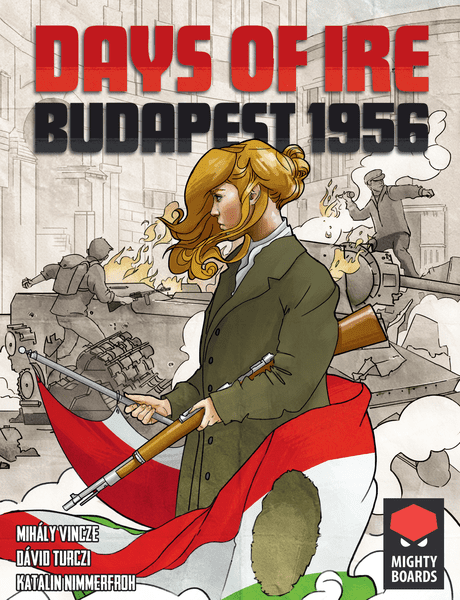Days of Ire: Budapest 1956 (2016) Board Game
Days of Ire: Budapest 1956 is a board game that focuses on the Hungarian Revolution of 1956, a key event in the Cold War era. Players take on the roles of either the Soviet forces trying to suppress the rebellion or the Hungarian freedom fighters seeking independence. The game captures the tense and chaotic atmosphere of the revolution, where every decision can have far-reaching consequences.
Game Components of Days of Ire: Budapest 1956
How To Setup Days of Ire: Budapest 1956
To set up the game, players first prepare the board by placing location tiles and tokens representing Soviet forces. Each player selects a revolutionary fighter and receives a starting hand of cards. The event deck is shuffled and placed within reach. The Soviet commander, either a player or a simulated opponent, prepares the headline cards that will drive the game’s progression.
Gameplay Mechanics and Game Objective
Player Experience
In **Days of Ire: Budapest 1956**, players immerse themselves in the intense days of the Hungarian Revolution of 1956. The game requires strategic planning and coordination, especially in cooperative mode, as players work together to clear events and defeat Soviet forces. Each turn, players can move, activate fighters, resolve events, attack militia, destroy tanks, and manage their card resources. The historical context adds a layer of depth and significance to the gameplay.
Pros
Cons
Personal Thoughts on Days of Ire: Budapest 1956
**Days of Ire: Budapest 1956** is ideal for those drawn to historical themes and cooperative gameplay. While it may not stand out as exceptionally innovative, it offers solid gameplay mechanics and a unique historical setting. It’s a good choice for fans of cooperative games looking to explore a different era and scenario. However, players who prefer games with less randomness might find it less appealing.
We are supported by our audience. When you purchase through links on our site, we may earn an affiliate commission, at no extra cost for you. Learn more.

